Arkansas consists of diverse regions with differing terrains, climates, industries, and—ultimately—concerns. To properly represent citizens across the state, the central government must know what specific issues each region faces.
Governor Jim Guy Tucker believed that the only way to be an effective governor was to have communication between the government and citizens of his state. He expressed these sentiments in his inauguration speech on December 12, 1992.
On September 15, 1993, Governor Tucker announced his Capital for a Day program, designed to grant Arkansans greater participation in state government operations. Governor Tucker and his cabinet of 30 officials traveled to the far corners of the state to learn firsthand what issues Arkansans faced. Three boxes of the James Guy Tucker, Jr., Papers contain information on the Capital for a Day programs.
Capital for a Day sites and stops include:
| Location | Date |
| West Memphis | 1993-09-23 |
| Harrison | 1993-11-04 |
| Leslie | 1993-11-04 |
| Monticello and Dermont | 1993-12-02 |
| Walnut Ridge | 1994-01-13 |
| Prescott | 1994-02-08 |
| Augusta | 1994-02-18 |
| Pocahontas | 1994-01-13 |
| Nashville | 1994-02-08 |
| Siloam Springs | 1994-05-19 |
| Helena | 1994-07-28 |
| Lake Village | 1994-12-03 |
The collection contains video recordings from events at Lake Village, Pocahontas, West Memphis, Harrison, Nashville, and Siloam Springs.
The Capital for a Day program proved successful at these sites, and records show that Governor Tucker and his team also received invitations from Magnolia, Blytheville, and Rogers. Typically Capital for a Day proceedings included a town hall meeting, luncheon, and tours of local factories and schools.
For the Benefit of the Citizens, City and County Officials, and the State Government
The Capital for a Day program required planning and coordination. Instead of hotel housing, host families were arranged for Tucker, Betty, and cabinet members. The cabinet of thirty, plus the Governor and First Lady, all rode together on a chartered bus from Little Rock to the Capital for a Day destinations.
The files on the Capital for a Day programs include bios of the cabinet members and host families. The collection contains dozens of thank-you notes recognizing the many parts played in putting together these town events. Records indicate that Capital for a Day programs built strong networking connections and included follow-up phone calls between local residents and the governor’s team for weeks after program events.
All this planning and preparation proved beneficial to the communities hosting Capital for a Day. It built personal connections and showed rural residents the roles and responsibilities of cabinet members.
Results
Capital for a Day programs revealed to Governor Tucker an appeal for better state highways. Working with the Arkansas State Highway Commission, Tucker developed a plan to finance construction of the most necessary roads around the state. This new plan was intended to update the 1991 Highway Improvement Program, which Tucker considered “a very partial program” and was proposed to take 11 years to complete.
Tucker's alternative plan would be financed by tax increases in gasoline and diesel fuel prices, a one-half cent sales tax, and revenue bonds. Tucker wanted rapid progress in highway construction.
Though the "Fix Our Roads Now" initiative failed, the Capital for a Day program still proved a success, teaching local communities that they could have a greater role in the state's governance.
Other Captial for a Day Programs
Other states and governors have practiced Capital for a Day programs similar to Tucker’s. Prior to Tucker, Governor George S. Mickelson of South Dakota hosted a Capital for a Day program, and similar initiatives are still occurring today in South Dakota under Governor Dennis Daugaard. Governor Andrew Cuomo of New York also has an ongoing Capital for a Day program.
Click to see the Capital for a Day on a Map.
